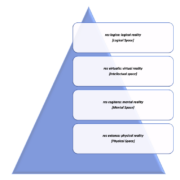Semantic Spaces and Word Embeddings
Just released, see full paper here.
Abstract
One of the critical hurdles, and breakthroughs, in the field of Natural Language Processing (NLP) in the last two decades has been the development of techniques for text representation that solves the so-called curse of dimensionality, a problem which plagues NLP in general given that the feature set for learning starts as a function of the size of the language in question, upwards of hundreds of thousands of terms typically. As such, much of the research and development in NLP in the last two decades has been in finding and optimizing solutions to this problem, to feature selection in NLP effectively. This paper looks at the development of these various techniques, leveraging a variety of statistical methods which rest on linguistic theories that were advanced in the middle of the last century, namely the distributional hypothesis which suggests that words that are found in similar contexts generally have similar meanings. In this survey paper we look at the development of some of the most popular of these techniques from a mathematical as well as data structure perspective, from Latent Semantic Analysis to Vector Space Models to their more modern variants which are typically referred to as word embeddings. In this review of algorithms such as Word2Vec, GloVe, ELMo and BERT, we explore the idea of semantic spaces more generally beyond applicability to NLP.










Leave a Reply
Want to join the discussion?Feel free to contribute!